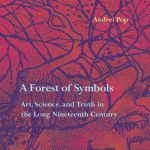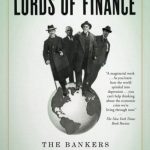By Charley S. Binkow
THE NEW ARCHIVE (No.3) Computer and online technologies are enabling historians to do history in a variety of new ways. Archives and libraries all over the world are digitizing their collections, making their documents available to anyone with a computer. Mapping and other kinds of visualization are allowing historians to create new kinds of documents and ask new questions about history. Each week, our Assistant Editors, UT History PhD student Henry Wiencek and Undergraduate Editorial Intern Charley Binkow, will introduce our readers to the world’s most interesting new digital documents and projects in THE NEW ARCHIVE.
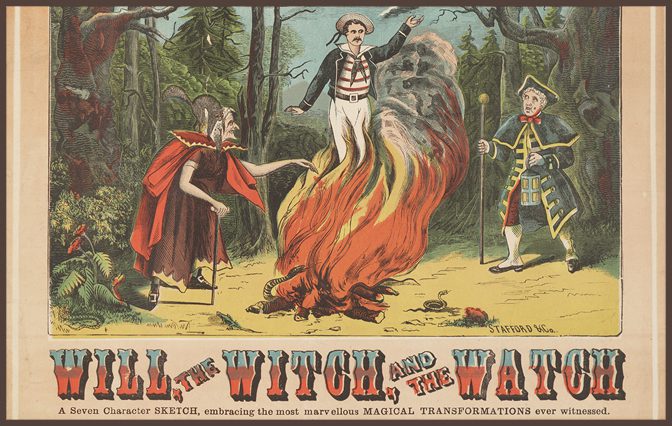 In a new age of digital powered skepticism, where anything “extraordinary” can be explained within seconds on a smartphone, there isn’t much room for magic. But the Harry Ransom Center at UT Austin has brought us back to a time when the mystical unknown captured the hearts and minds of people everywhere. The HRC acquired the scrapbooks of legendary magician Harry Houdini (1891-1926) in 1958 and has recently digitized its collection for the public. The collection contains ten scrapbooks filled with advertisements, newspaper clippings, pamphlets, reports, how-to articles, and almost everything else regarding magic from roughly the 1830s through the 1920s. Houdini owned all the books at the time of his death, but he did not compile all of the clippings. Four books were owned by his contemporaries, including Harry Helms, Herr Jansen, S.S. Baldwin, and Professeur Em. De Verli (sic) and their books have clippings that span Europe and North America throughout the 19th century. Some scraps detail the “Revival of the Dread Devil-Worship,” while others document articles, such as “Houdini Tells How the Mediums Know So Much.”
In a new age of digital powered skepticism, where anything “extraordinary” can be explained within seconds on a smartphone, there isn’t much room for magic. But the Harry Ransom Center at UT Austin has brought us back to a time when the mystical unknown captured the hearts and minds of people everywhere. The HRC acquired the scrapbooks of legendary magician Harry Houdini (1891-1926) in 1958 and has recently digitized its collection for the public. The collection contains ten scrapbooks filled with advertisements, newspaper clippings, pamphlets, reports, how-to articles, and almost everything else regarding magic from roughly the 1830s through the 1920s. Houdini owned all the books at the time of his death, but he did not compile all of the clippings. Four books were owned by his contemporaries, including Harry Helms, Herr Jansen, S.S. Baldwin, and Professeur Em. De Verli (sic) and their books have clippings that span Europe and North America throughout the 19th century. Some scraps detail the “Revival of the Dread Devil-Worship,” while others document articles, such as “Houdini Tells How the Mediums Know So Much.”
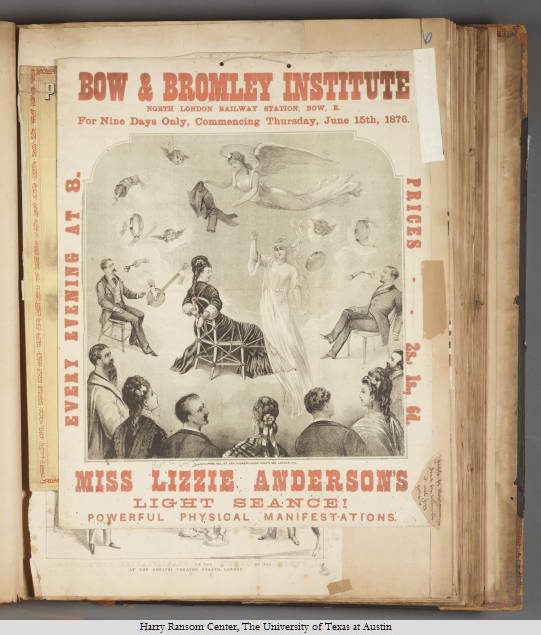 One of the best features of the collection, besides its size, is its display. If you click on “Page Flip View,” the scrapbook will appear on screen and let you flip through the collection, page by page. You feel as if you’re flipping through the scrapbooks themselves. My personal favorite piece (located on page 35 of the “Disbound/Divided” scrapbook) is an article from Science and Invention magazine from July 1923. The article is titled “Magic For Everybody,” and includes such classic tricks as “The Vanishing Handkerchief” and “The Vanishing Horse.” This collection gives us a comprehensive understanding of what these magicians thought valuable; everything they saw as important or nostalgic or innovative they preserved in these books. We can track their love of magic across a century and see the dynamic ways in which the field changed, in many instances by the collectors themselves. Almost every page of this collection bleeds an infectious love for the world of the supernatural and is well worth exploring.
One of the best features of the collection, besides its size, is its display. If you click on “Page Flip View,” the scrapbook will appear on screen and let you flip through the collection, page by page. You feel as if you’re flipping through the scrapbooks themselves. My personal favorite piece (located on page 35 of the “Disbound/Divided” scrapbook) is an article from Science and Invention magazine from July 1923. The article is titled “Magic For Everybody,” and includes such classic tricks as “The Vanishing Handkerchief” and “The Vanishing Horse.” This collection gives us a comprehensive understanding of what these magicians thought valuable; everything they saw as important or nostalgic or innovative they preserved in these books. We can track their love of magic across a century and see the dynamic ways in which the field changed, in many instances by the collectors themselves. Almost every page of this collection bleeds an infectious love for the world of the supernatural and is well worth exploring.
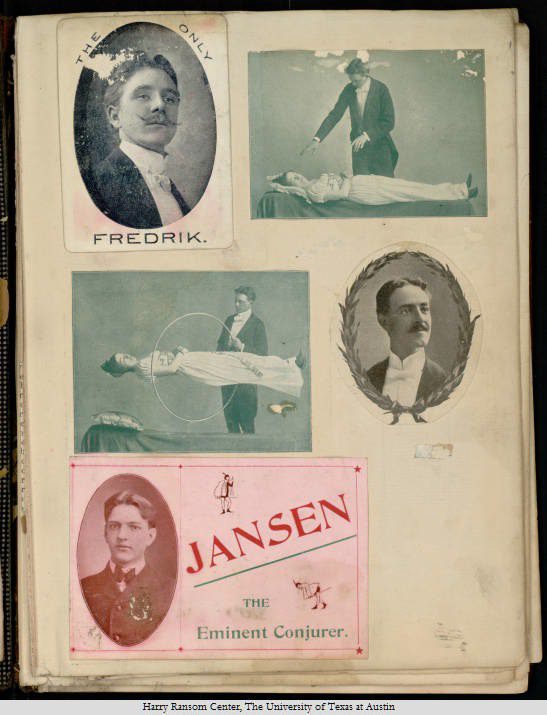 If you like the Houdini archive, you should also check out the HRC’s other digital collection of “Magic Posters and Playbills,” which contains a visual history of magic spanning from 1750 to 1920.
If you like the Houdini archive, you should also check out the HRC’s other digital collection of “Magic Posters and Playbills,” which contains a visual history of magic spanning from 1750 to 1920.
More finds in THE NEW ARCHIVE:
Photo Credits:
Poster for “Will, The Witch, and the Watch” (Harry Houdini Papers and Magic Collection, Harry Ransom Center)
Magic show advertisement from “Magician’s Scrapbook,” Houdini’s collection of newspaper clippings, playbills, and other assorted material (Harry Houdini Papers and Magic Collection, Harry Ransom Center)
Page from “Magician’s Doings,” a scrapbook created by magician Harry August Jansen then acquired by Houdini. (Harry Houdini Papers and Magic Collection, Harry Ransom Center)

